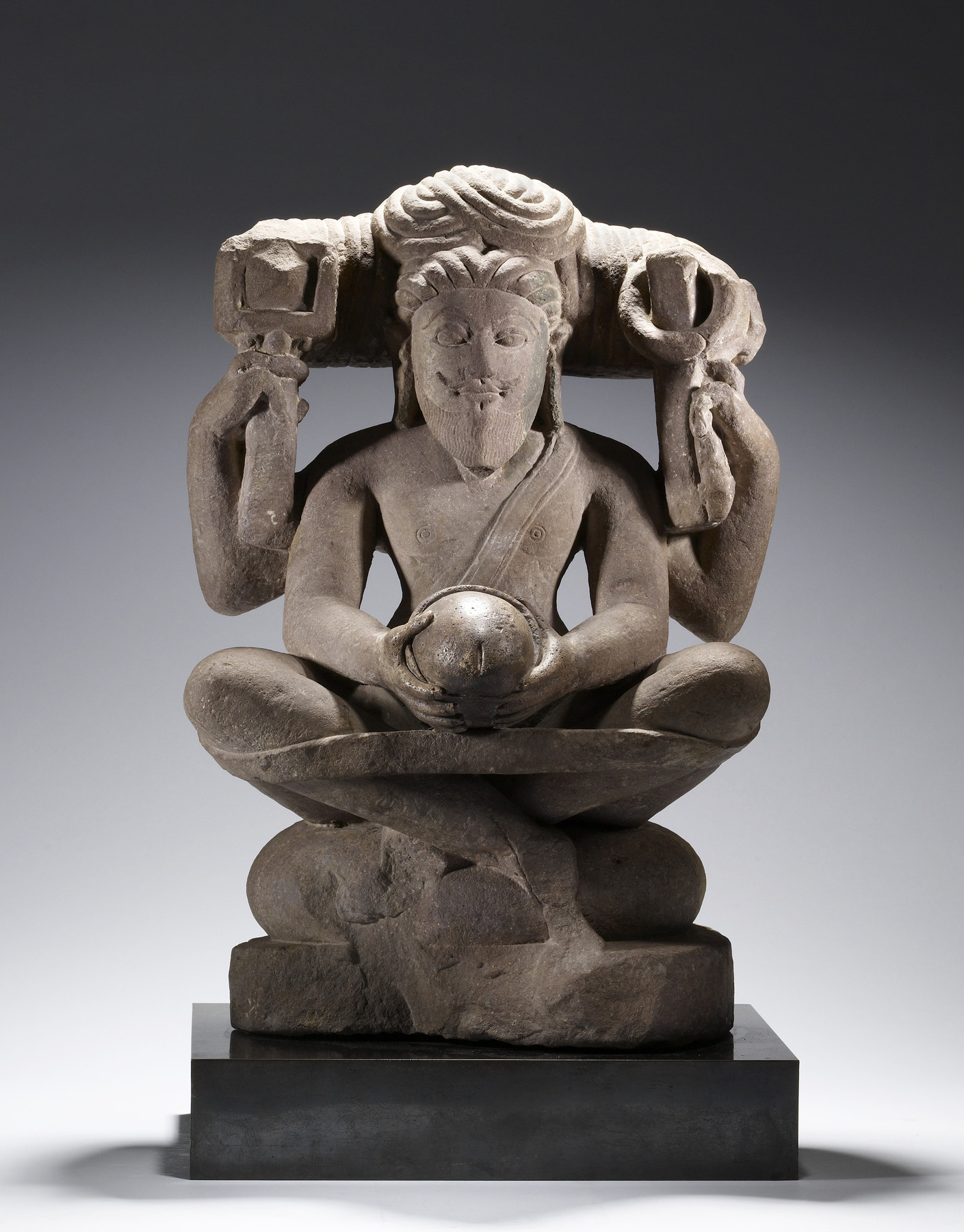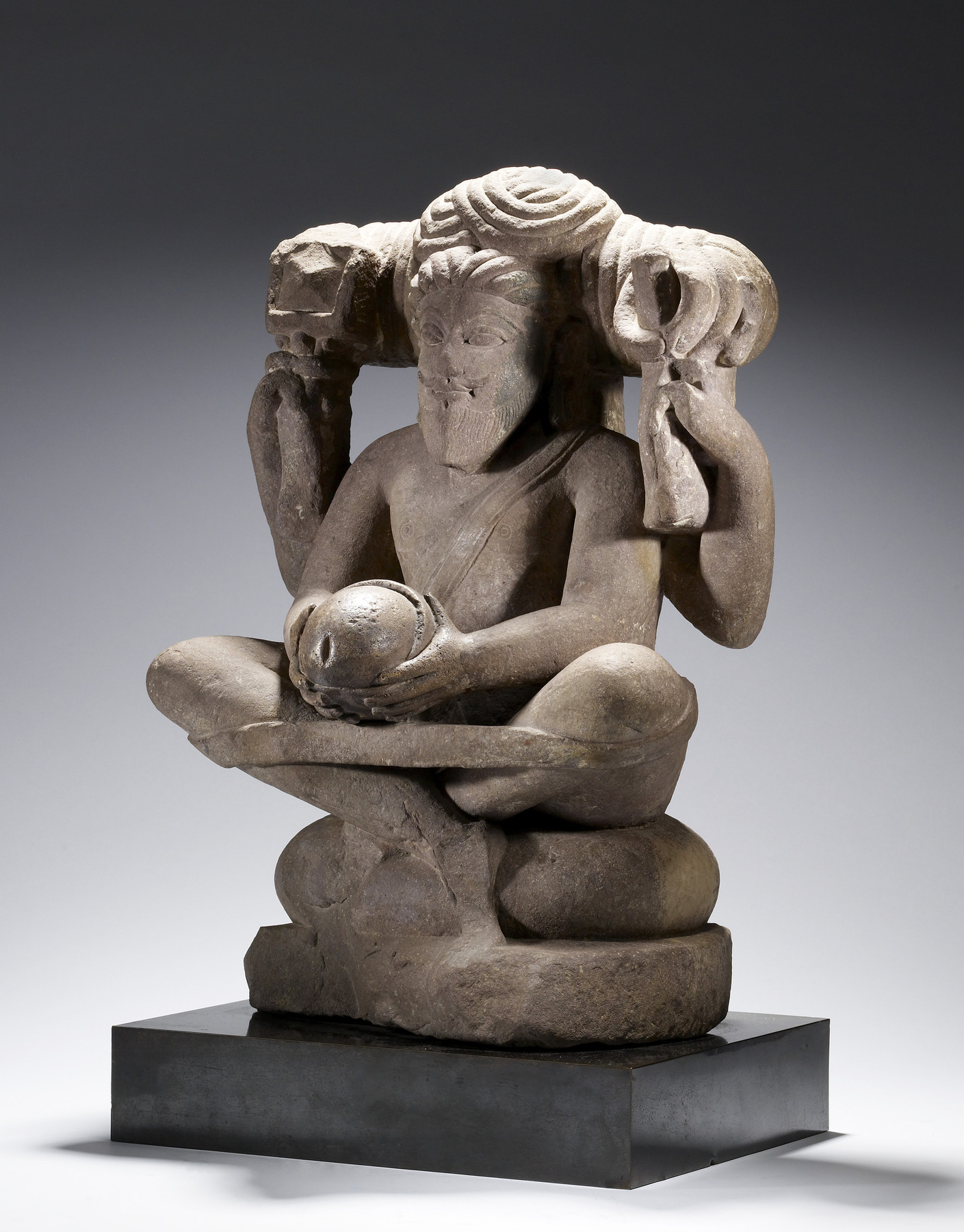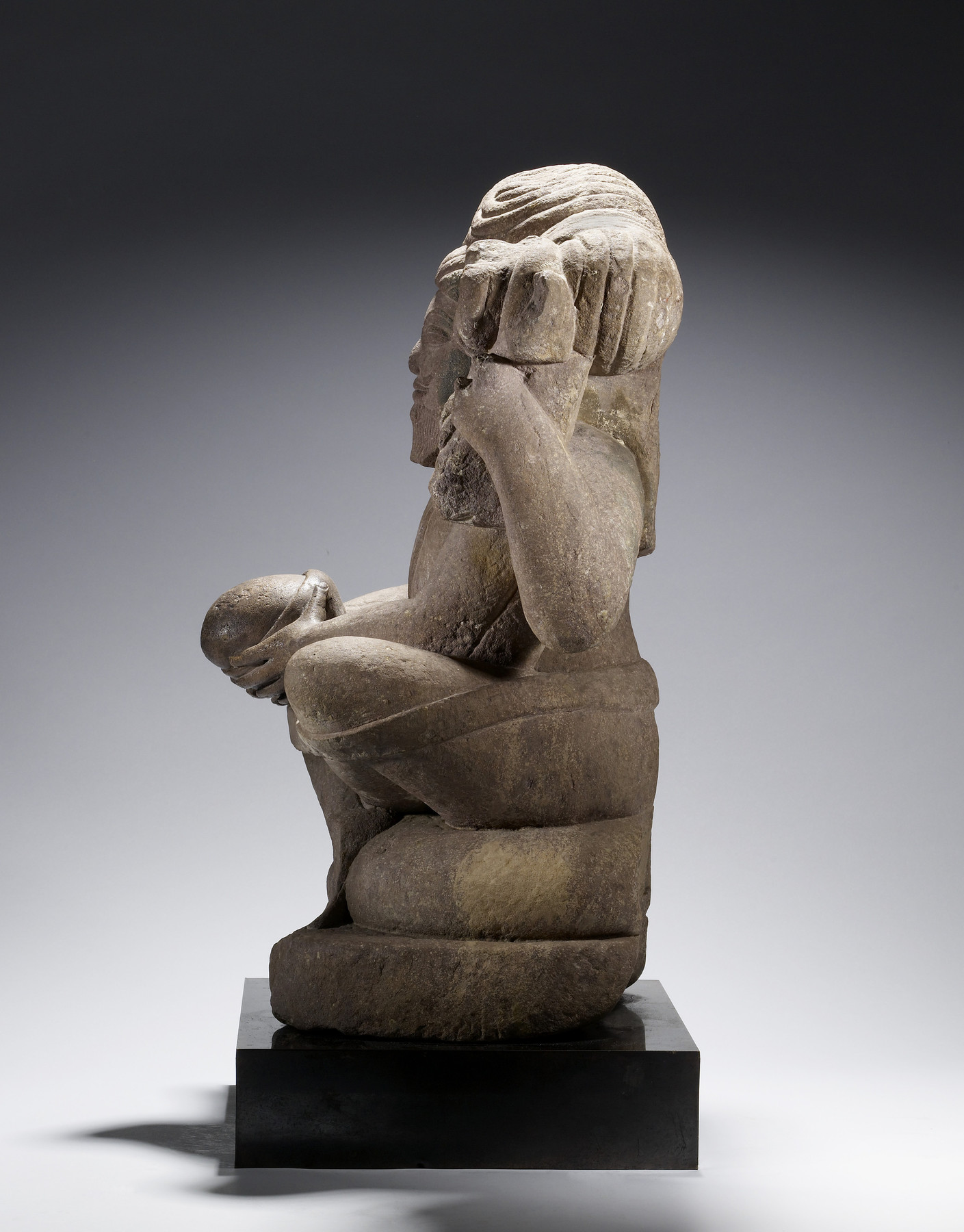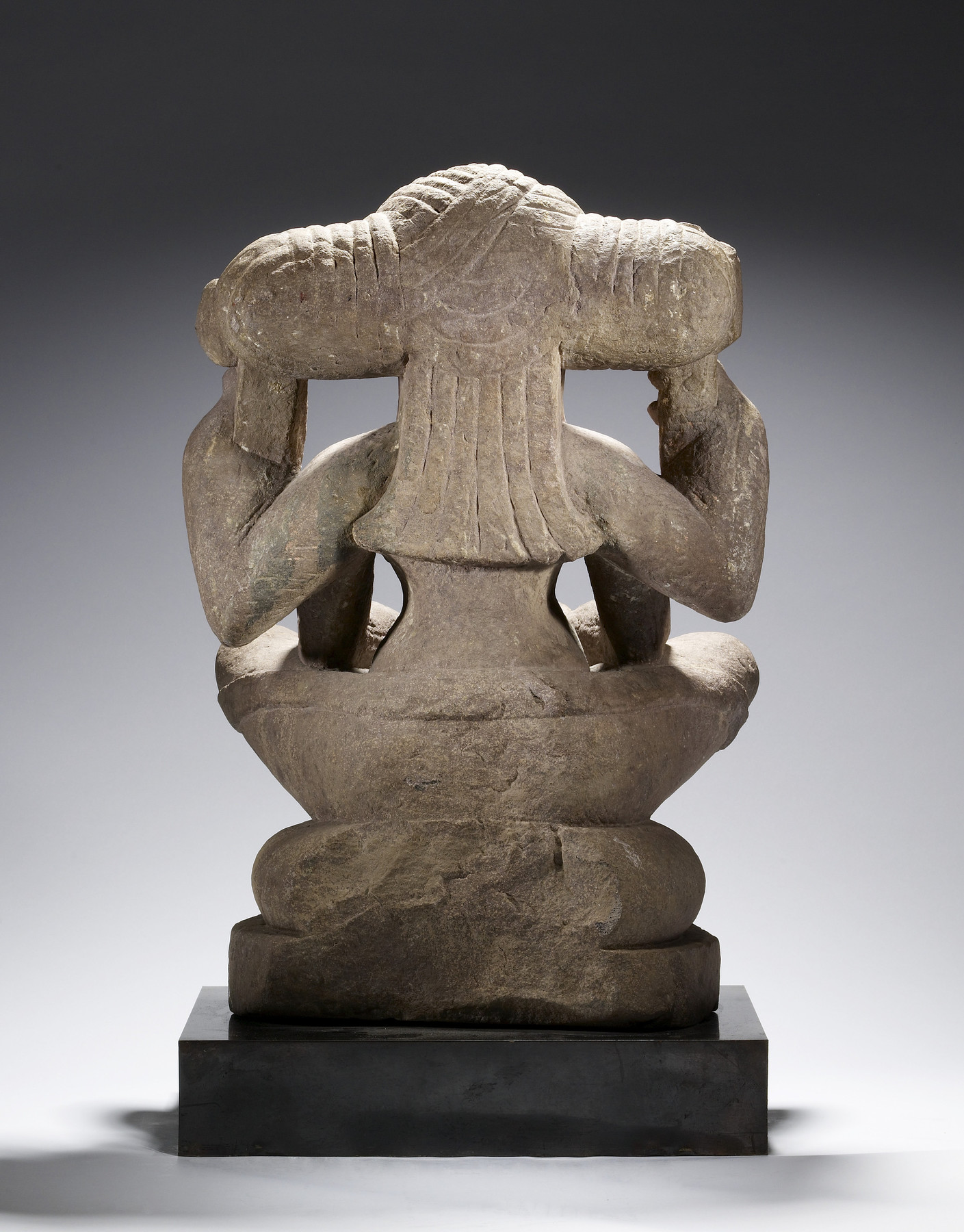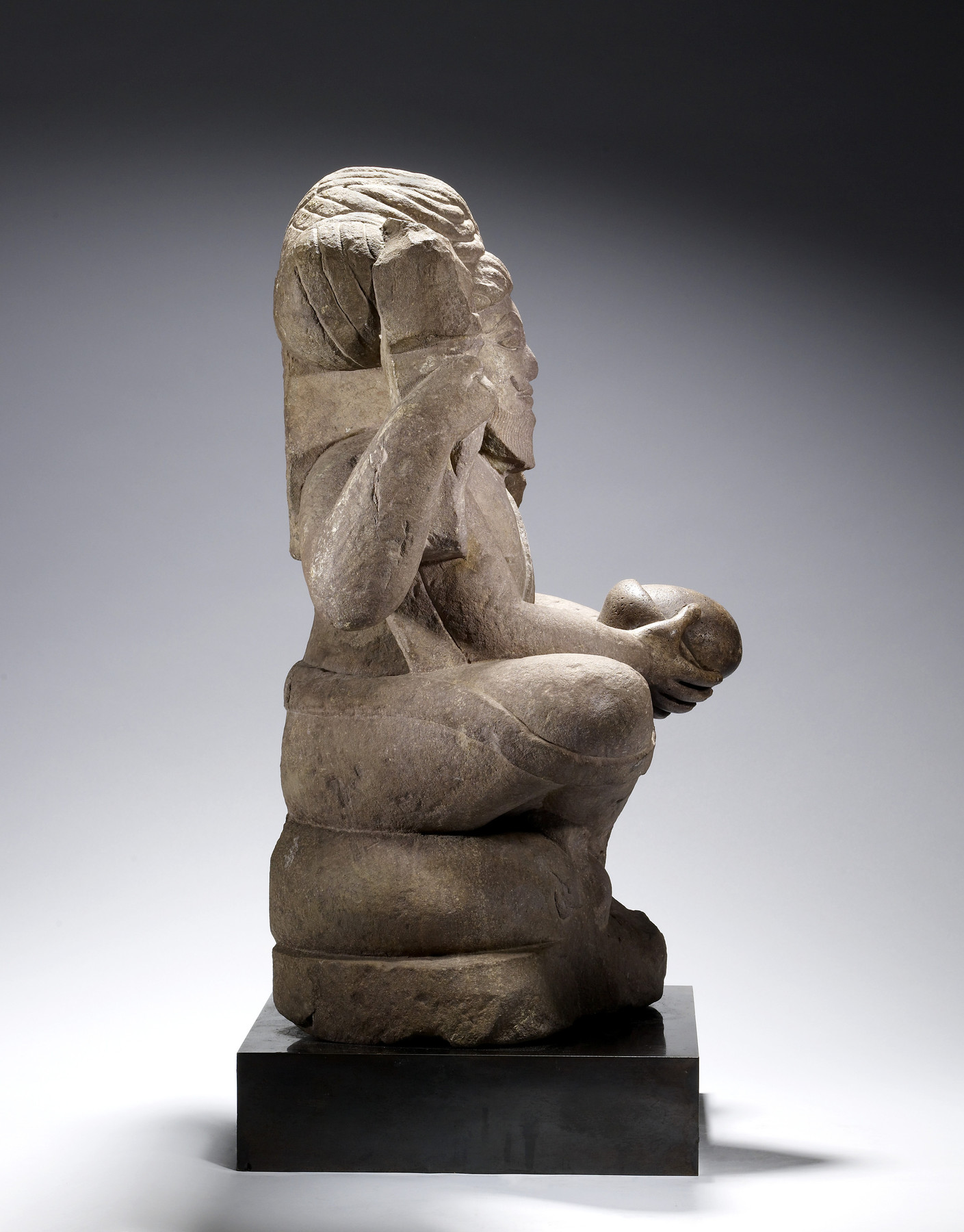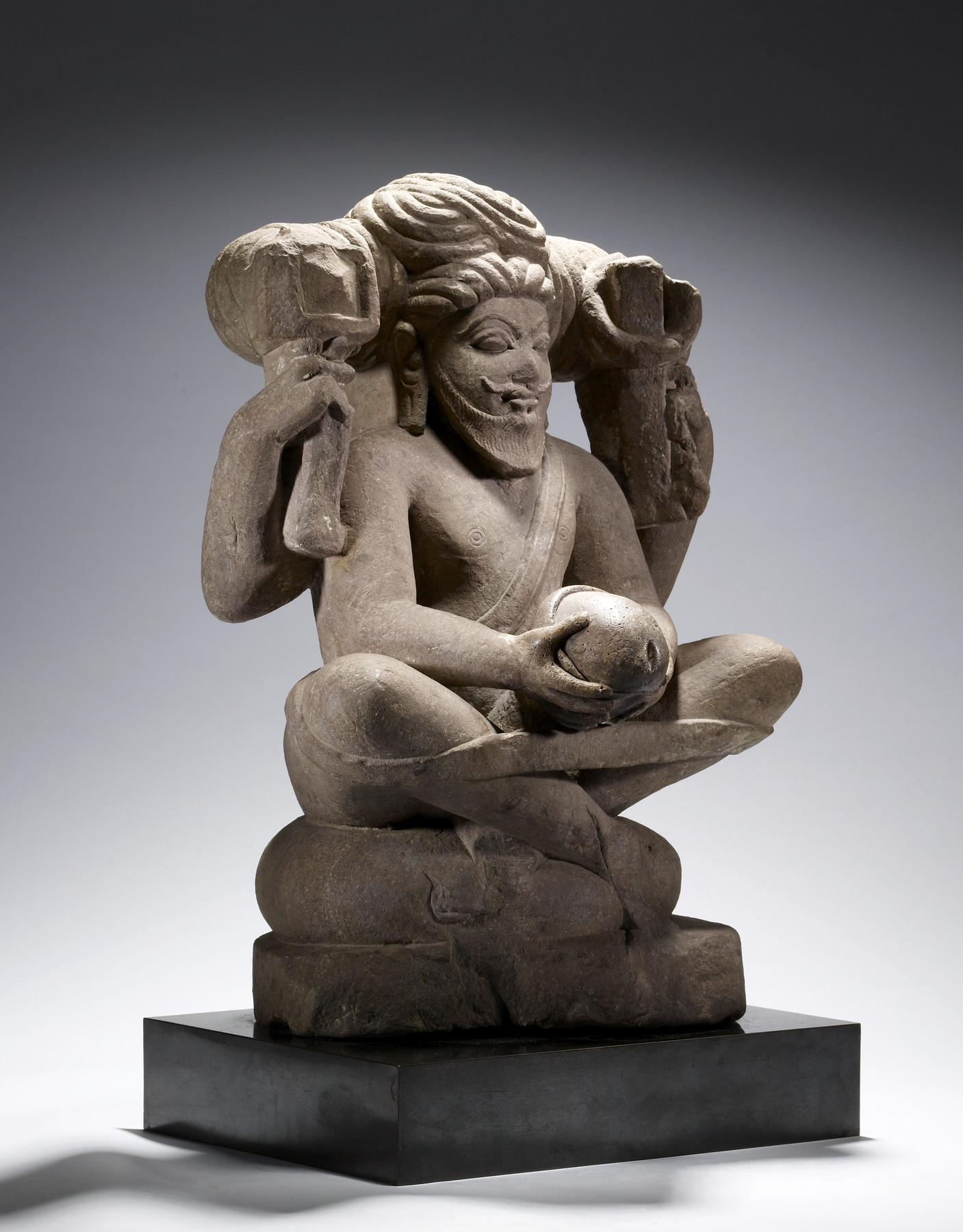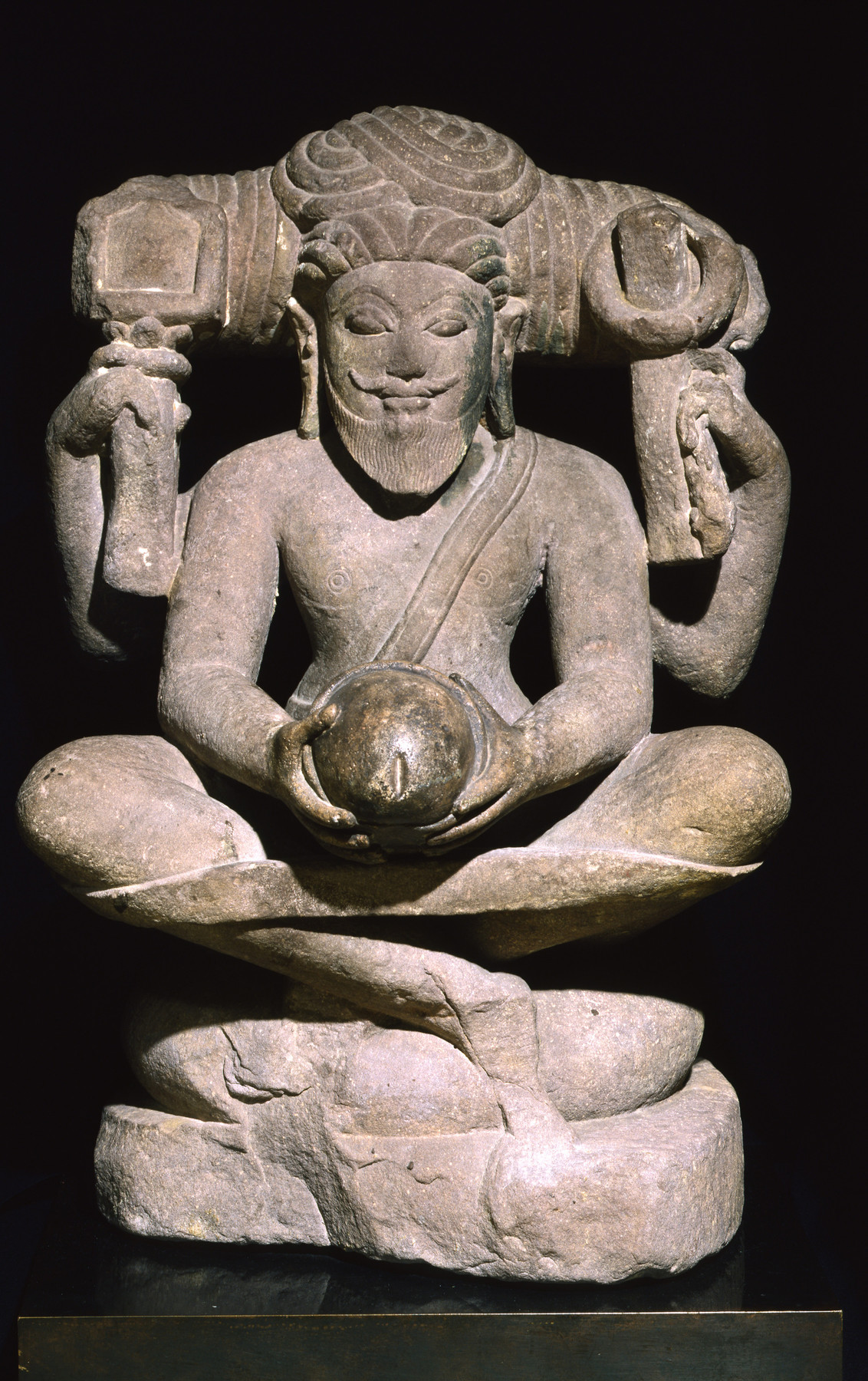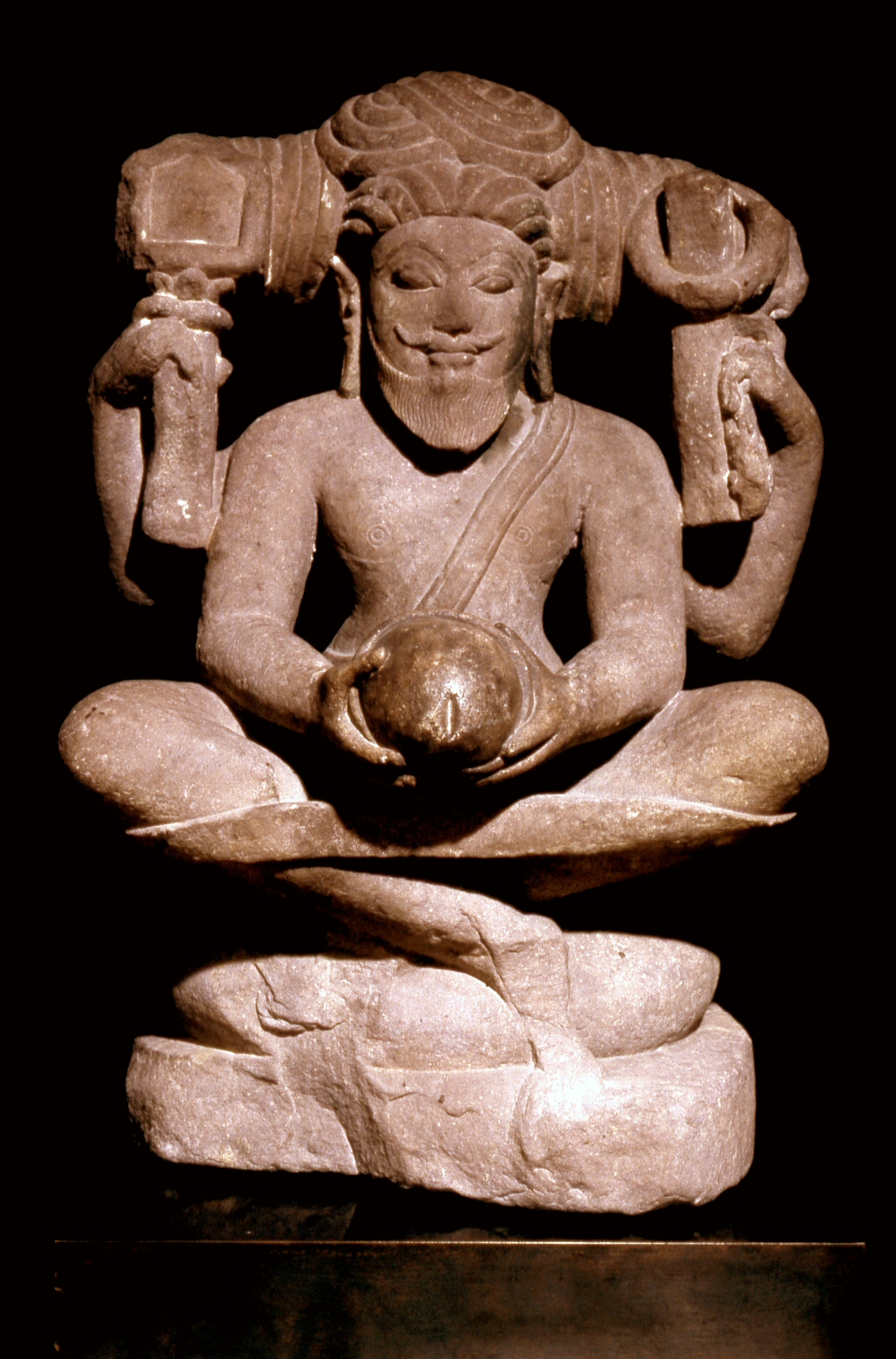Ascetic Deity
(India, Nepal, and Tibet)
The bearded figure’s elaborately arranged dreadlocks and the strap that holds his legs in their crossed position identify him as an ascetic and a master of yoga: one who has gained spiritual power through the practice of intense physical and mental discipline. It is possible that the four-armed figure is a divinized guru—a teacher of religious knowledge; alternatively, he may be Agni, god of fire, who is instrumental in transmitting ritual offerings to the gods.
With his two front hands he holds his own oversized phallus, its erect state signaling the yogic power generated by the retention of seed. With his upper right hand he holds a square-topped sacrificial ladle, used to pour offerings into ritual fires. The object in his upper left hand may be a palm-leaf manuscript, but the ring at its top makes this identification uncertain. The simple sash that crosses his chest diagonally further marks him as a figure of spiritual authority, for such sashes are worn by Hindu gurus.
Made for a temple, this sculpture probably once occupied a shrine-like niche on an exterior wall. It may have been placed near the pinnacle of a temple tower ("shikhara"), however, where on the Vishvanatha temple of Khajuraho a similar ascetic figure is found.
Provenance
Provenance (from the French provenir, 'to come from/forth') is the chronology of the ownership, custody, or location of a historical object.
Doris Wiener Gallery, New York; Sale, Sotheby's, New York, June 17 1993, sale no. 6440, lot 85; purchased by John and Berthe Ford, Baltimore, 1993; given to Walters Art Museum, 2004.
Exhibitions
| 2001-2003 | Desire and Devotion: Art from India, Nepal, and Tibet in the John and Berthe Ford Collection. The Walters Art Museum, Baltimore; Santa Barbara Museum of Art, Santa Barbara; Albuquerque Museum, Albuquerque; Birmingham Museum of Art, Birmingham; Hong Kong Museum of Art, Hong Kong. |
Conservation
| Date | Description | Narrative |
|---|---|---|
| Examination | examined for condition |
Geographies
India, Madhya Pradesh (Place of Origin)
Measurements
H: 23 1/16 × W: 16 × D: 12 3/8 in. (58.5 × 40.6 × 31.5 cm); Base H: 3 1/16 × W: 15 3/8 × D: 11 13/16 in. (7.7 × 39 × 30 cm)
Credit Line
Gift of John and Berthe Ford, 2004
Accession Number
In libraries, galleries, museums, and archives, an accession number is a unique identifier assigned to each object in the collection.
In libraries, galleries, museums, and archives, an accession number is a unique identifier assigned to each object in the collection.
25.255

